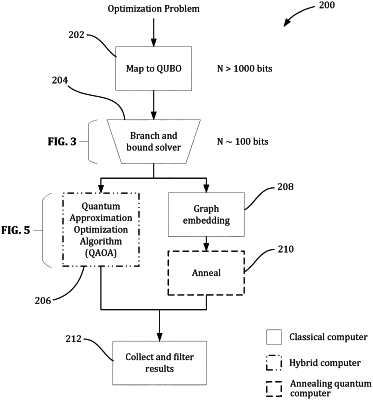| CPC G06F 17/11 (2013.01) [G06F 17/16 (2013.01); G06F 17/175 (2013.01); G06N 10/00 (2019.01)] | 19 Claims |

|
1. A method of operating a hybrid computer system, the hybrid computer system comprising a quantum processor unit and one or more classical processor units, the quantum processor unit comprising a quantum processor cell configured to process quantum information by applying control signals to qubits in the quantum processor cell, wherein the quantum processor cell comprises a superconducting circuit comprising qubit devices, the method comprising:
selecting an element in a solution to an optimization problem;
assigning one of a plurality of distinct values to the selected element;
identifying a first subset of elements of the solution, wherein the first subset of elements have respective values assigned to them;
in response to satisfying a criterion dependent on a number of elements in the first subset of elements, causing the quantum processor unit and at least one of the one or more classical processor units to execute a quantum approximate optimization algorithm (QAOA) to generate values for a second subset of elements of the solution to the optimization problem, wherein executing the QAOA comprises an iterative process, and each iteration of the iterative process comprises:
by operation of the at least one of the one or more classical processor units:
adjusting parameters of the QAOA,
constructing quantum program instructions according to the adjusted parameters; and
by operation of the quantum processor unit:
generating a control sequence configured to execute the operations proscribed by the quantum program instructions; and
executing the control sequence; and
combining the values of the first and second subsets of elements to obtain the solution to the optimization problem.
|